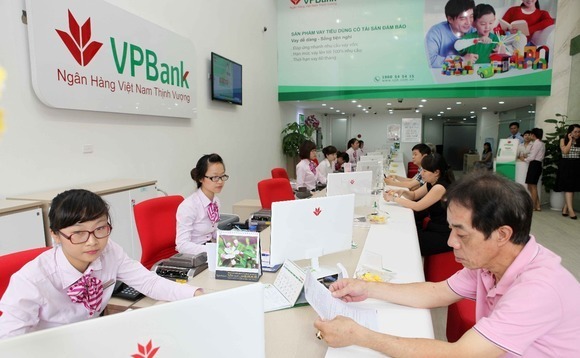
Impact investors and Asian banks: Developing interest

Despite the rise of non-banking finance companies, traditional banks in emerging markets still appeal to impact investors. Using them to their potential means adapting to each market
RBL Bank is an outlier in CDC Group's portfolio. The UK development finance institution (DFI) has stakes in several Indian financial institutions such as non-banking finance companies (NBFCs) and microfinance institutions (MFIs) that are seen as a means of providing financial services to people and small companies that would otherwise go without. RBL does not fit this profile.
But CDC believed the bank was as committed to expanding the financial system as CDC itself, and has followed up an initial $28 million investment in 2014 with another INR3.3 billion ($49.7 million) last year, in addition to collaborating on a financial literacy program. The DFI believes its experience with RBL shows that traditional banks do have a place in the portfolio of impact investors.
"From our perspective they've done exactly what we'd hoped they'd do, which is utilize their macro position to expand into underserved segments and products," says Maria Largey, director of financial institutions at CDC. "And from a commercial perspective it's interesting because they had their successful IPO last year, which we were very happy to stay and be a part of."
CDC's view is shared by a number of other investment professionals across Asia, who see plenty of potential for traditional financial institutions in emerging markets to drive a financial inclusion agenda. However, not all companies are equal, and impact investors must consider the circumstances of a bank's market before committing.
Attractive target
Bringing customers into the financial system is challenging in emerging markets that lack the requisite technology and communications infrastructure. As a result, it is often difficult for banks that rely on a branch model often find it difficult to reach far-flung rural customers and small and medium-sized enterprises (SMEs).
"Like anything, it's a matter of efficiency," says Robert Kraybill, managing director of Impact Investment Exchange Asia (IIX), which aims to connect capital providers of different kinds with projects and companies that provide social benefits. "It's easy for a bank to make a multi-million dollar loan to a large company, but it's harder to build out the branch network that's needed to serve a group of smaller companies."
Despite this reputation, the traditional banking sector continues to appeal to impact investors, as reflected in several recent deals considered by the International Finance Corporation (IFC). Since the beginning of the year, it has proposed investments in Thailand's TMB Bank, Bangladesh's Dhaka Bank and Vietnam's VPBank (to which the group had already committed $125 million in 2016). The proposals, all in listed institutions, were justified on the basis of improving access to SMEs in the respective markets.
"IFC's investments in banks are geared towards serving the needs of the market by providing the private sector with increased opportunities for growth, employment and thereby promoting higher standards of living for the people of that country," said Vittorio Di Bello, IFC financial institution group manager for Asia . "IFC believes that banks provide the most direct means of financing support to local businesses which in turn allows local entrepreneurs, family businesses, and consumers to further strengthen the economy."
This approach contrasts with IFC's presence in financial services in India, where it tends to focus on NBFCs and MFIs rather than traditional banks (although the group does hold a stake in RBL that it purchased before the company's IPO). But investment professionals say one should not conclude this means banks are a better bet for financial inclusion in these markets – more important may be the degree to which other players' funding needs are already being met.
"The MFI sector in Bangladesh received quite a bit of support from both donor agencies and investors like IFC during its growth phase," explains IIX's Kraybill. "However, now that market is quite well developed and it's actually quite well financed from both the local banking sector and multilateral funded institutions in Bangladesh that provide loans to microfinance institutions."
Meanwhile, banks in Vietnam and Thailand are seen as attractive investment destinations because of the weakness of local NBFCs and MFIs. Thailand's banks are said to have done such a good job reaching out to rural customers and SMEs that there is no need for other players, while Vietnamese lenders are controlled by the central bank to such an extent that MFIs and NBFCs cannot afford riskier loans to small companies. In this case, investors may believe they are better off helping the country's existing financial infrastructure rather than trying to overcome entrenched cultural and regulatory barriers.
The broader view
Of course, impact investors cannot always shy away from bringing change to their target markets, since that is their reason for being. But market watchers say due consideration must be paid to the desired outcomes of investments in financial services. If capital is allocated with this in mind, the sector can develop to the point where other investors with more straightforward goals are able to step in.
"IFC's got a big investment mandate, so it can support companies to the second stage of development," says Stephen Bates, financial services deal advisory partner at KPMG. He notes that last year also saw Singapore sovereign wealth fund GIC Private buy a 7.7% stake in Vietcombank, another Vietnamese listed bank. "After IFC and other DFIs you'll start to see other strategic and financial investors like GIC support the next stage of development of the sector."
Others point out that, like banks, not all impact investors are equal. Large institutions like IFC and CDC have well-earned reputations for stability and careful judgment, but that very size and longevity may also work against them when considering investments in more daring ventures.
In one case, IIX helped set up an investment for Kinara Capital, an Indian company that provides uncollateralized loans to micro and small enterprises. The business model was sound, but seen as too risky for larger players, so IIX put together a consortium of impact investors to provide the $1 million needed.
"Lending without collateral in that space in India was uncommon at that time, and so it was something that needed the support of investors that were willing to take a little more risk to back a new idea," Kraybill says. "That's what we try to support through our work: the somewhat off-the-beaten track, innovative ideas."
Latest News
Asian GPs slow implementation of ESG policies - survey
Asia-based private equity firms are assigning more dedicated resources to environment, social, and governance (ESG) programmes, but policy changes have slowed in the past 12 months, in part due to concerns raised internally and by LPs, according to a...
Singapore fintech start-up LXA gets $10m seed round
New Enterprise Associates (NEA) has led a USD 10m seed round for Singapore’s LXA, a financial technology start-up launched by a former Asia senior executive at The Blackstone Group.
India's InCred announces $60m round, claims unicorn status
Indian non-bank lender InCred Financial Services said it has received INR 5bn (USD 60m) at a valuation of at least USD 1bn from unnamed investors including “a global private equity fund.”
Insight leads $50m round for Australia's Roller
Insight Partners has led a USD 50m round for Australia’s Roller, a venue management software provider specializing in family fun parks.







